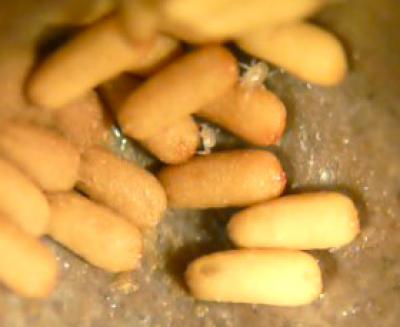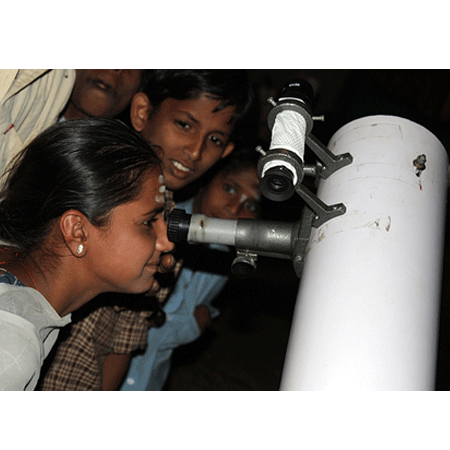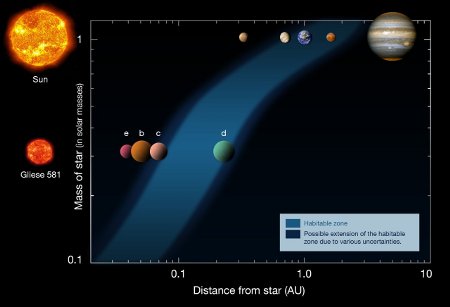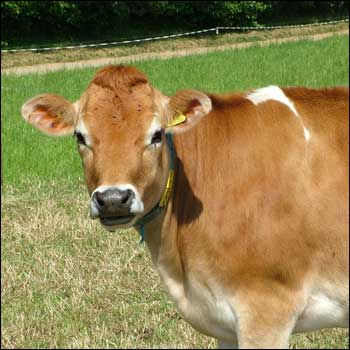Science news in brief
26-April-2009
Goldilocks, clean coal and magic bullets

The research below, chosen from hundreds of papers published this week, range from mites as maids and genes as medicine to small exoplanets, clean coal and the genome of the cow. Take a look:
20-Apr-2009 Live-in domestics.
Mites act as maids in the nests of tropical sweat bees, where they keep fungi in check. Bees and their young are healthier when mites live-in, report researchers from the Smithsonian Tropical Research Institute and the University of Texas. Mutually beneficial cleaning relationships have been documented for shrimps and fish that eat parasites on larger fish, but this is the first confirmation of a cleaning relationship between two different species on land.
21 Apr 2009 No genetic magic bullet
The Wellcome Trust hit back after claims made by Professor Steve Jones, Britain's leading geneticist, that such research was running out of steam and that the vast sums invested in the field may be better spent elsewhere.
21 April 2009 Lightest exoplanet yet discovered
Planet Gliese 581 e orbits its star in 3 days. “With only 1.9 Earth-masses, it is the least massive exoplanet ever detected and is, very likely, a rocky planet”, says co-author Xavier Bonfils. Being so close to its host star, the planet is not in the habitable zone. But another planet in this system is.
21 April 2009 She Is An Astronomer project seeks to break down misconceptions and gender issues. In astronomy only one quarter of all professionals are women. In some countries there are no female astronomers. The International Year of Astronomy 2009 cornerstone project, She Is An Astronomer has been set up to address the issues and tackle the problems.
21 April 2009 Learning how the human genome works
The human genome complete sequencing project in 2003 revealed the enormous instruction manual for humans. But there are many unanswered questions. To explain how we develop, scientists will have to decode the whole network of biological complexes that regulate development. One of the biggest challenges is to analyse the key proteins in the development of a human being, namely the proteins that bind to DNA. “If the genome provides the recipe to define a human being, the DNA proteins are the “chefs” that cook it”, says Herbert Auer.
22-Apr-2009 Earth Day
Now is the time to galvanise people to make personal changes for a sustainable future. Earth Day Network guides those who want to help advance climate policy. "The 40th Anniversary of Earth Day in 2010 will be recognized by future generations as a world turning point, and a shift toward global sustainability symbolised by the birth of The Green Generation."
22-Apr-2009 It's go for 'clean' coal power-stations
The government has given the go-ahead for a new generation of coal-fired power plants, if they can reduce their emissions.
24 April 2009 DNA blueprint for better cows
The cow genome has now been sequenced, which could lead to more sustainable food production.
24 Apr 2009 Hydrogen protects nuclear fuel in final storage
The location for storage of Sweden's spent nuclear fuel will be announced this summer. Ahead of the decision the safety debate focuses on the three barriers intended to keep radioactive material from leaking into groundwater.
25 April 2009 Radioactive hotspots
A new map showing Scotland's radon hotspots has been published. This will help households decide if they need to take action to protect themselves from the radioactive gas estimated to cause 2000 lung cancer deaths in the UK every year.
Education resources, classroom activities, cool stuff
Lightest exoplanet
Searching for life on other worlds
Audio extract from interview with Giovanna Tinetti
Finding water for the first time
What is the biggest star in the universe?
Johnny Cash and the Muppets sing Ghost Riders in the Sky
Genetics research
Genome-wide association studies: failure or success?
Genes show limited value in predicting diseases
Carbon capture technology
"Carbon Capture - a physical impossibilty"
Radioactive hotspots
Radon in Dwellings in Scotland: 2008 Review and Atlas
Transcript of 26 April 2009 podcast:
Ghost riders in the sky

Hello again and welcome to the Real Science review of the week If you're wondering what ghost riders in the sky have to do with real science, we'll come to that shortly.
First I'll point you to a couple of important science-related stories from the past week. Steve Jones caused a wee stushie a few days ago by asking in the pages of the Daily Telegraph if the huge amounts of money invested by the Wellcome Trust to "read the message written in human DNA" were being wasted.
Burying the science
Jones's opinion piece was interpreted for the front page of the Telegraph in a news story that failed to capture the science. To be honest Jones himself, a seasoned science communicator, buried the real science in the second last paragraph of his piece.
To get at that science you need to look at the New York Times article and the Genetic Future blog posts, which we link to in our resources section. There you'll find that the debate is not about whether we should continue to study the human genome at all, but about whether we should be doing it using more and more genome-wide association studies – "the scattergun approach" mentioned by Jones, which cost millions of dollars each – or trying a different tack, like decoding the whole genome of individual patients.
The debate is about how, not whether, to do the science. It is not, as the Telegraph front page would have us believe, about whether "the hundreds of millions invested [in genetic research] would be better spent elsewhere".
Burying the carbon
That is precisely the debate, however, about carbon capture technology – another big science story this week. Coal-fired power stations that don't cause catastrophic climate change seem like a great idea, since coal is plentiful and converting it to electricity is proven technology – unlike many of the methods proposed by the greens as solutions to climate change.
So when the Government gave the go-ahead to new coal-fired power stations – as long as they use carbon capture and storage – they probably thought it would be welcomed by environmentalists. And to some extent it was, but not wholeheartedly. Why not?
Several reasons:
1) They are only making it a requirement to capture 20-25% of the carbon dioxide emitted, so the remaining 75-80% will still be warming the globe.
2) CCS is far from proven technology. Nobody knows if it will work. So we could be building a whole new generation of coal-fired power stations that release huge amounts of carbon dioxide to the atmosphere.
3) Mining and transport of coal release carbon dioxide, as does the manufacture of the CCS equipment – and coal-fired power stations fitted with CCS use up to a third more coal than those without it.
Up the CCS
For all these reasons Greenpeace for instance has some doubts about the government announcement, but have given it a cautious thumbs-up. To me there's a strange contrast here between that organisation's acceptance that we might find a way to store enormous quantities of carbon dioxide under the earth forever and their adamant assertion that we'll never be able to store much smaller quantities of nuclear waste for a few thousand years.
Greenpeace's heart is in the right place. But I sometimes worry where its head is.
Marvels and mysteries
So let's get to the ghost riders. I found the book that first fired my love of science in the attic of an aunt's house, where I spent long hours as a boy when we visited in the summer, reading this book and listening to scratchy old vinyl records on a wind-up gramophone.
The Marvels and Mysteries of Science was a heavy blue volume with black and white illustrations and glossy pages. The two images that gripped me were a glorious photograph of the spiral galaxy in Andromeda and a diagram comparing the size of our Earth, the Sun and the star-monsters Rigel, Aldebaran and Betelgeuse.
It was my first encounter with the immensity of space: A million earths could fit inside the sun. A billion suns could be squeezed into Betelguese. The Andromeda galaxy was so far away that its light – the light of 200 billion stars – took 2 million years to reach us. And out past this nearest celestial neighbour there were another 200 billion galaxies.
My brain couldn't begin to grasp all this. The universe was way beyond anything I knew or could ever imagine. It had just taken my dad what seemed like all day in an old Ford Popular to drive us from Cumnock in Ayrshire to Kirkcaldy in Fife. It was a long drive in those pre-motorway days. But we hadn't even got out of Scotland.
Shivers
And while I was trying and failing to grasp the vast distances in the sky that I could just glimpse through the cobwebbed skylight above my head, the record that played over and over in that dusty old attic was Ghost Riders in the Sky:
"When all at once a mighty herd of red eyed cows he saw
A-plowing through the ragged sky and up the cloudy draw."
Song, space and imagination sent shivers up my spine. I loved it. I wanted more of that feeling of wonder at the marvels and mysteries of science. I still do. And the greatest mystery of them all is this. Are we alone in the universe?
The discovery of the first exoplanet in 1995 made it much more likely that the answer to that question is 'No'. Until then our solar system might have been the product of an extremely rare cosmic accident.
Winged horse
But we have now found over 300 planets around other suns - 338 are currently listed by the Planetary Society, our first link in the resources section, including the most recent discovery, the smallest exoplanet yet found - and more are being discovered every month. So we are pretty certain now there are lots of other places in the universe that life could exist.
What's so good about small? Well because of the vast distances, detecting planets of other stars is incredibly difficult, so large planets are easier to find than small ones. But large planets are gas giants like Jupiter and Saturn, where life as we know it has no chance to evolve or survive.
We are only just beginning to find terrestrial planets – rocky planets like earth with a solid surface and have yet to find a terrestrial planet in the habitable zone – the Goldilocks zone, where it is neither too hot nor too cold, but just right for life. But it is just a matter of time, and the consensus now is that these are common in our galaxy and the universe.
So is there life on other planets? Have a listen to the extract from my interview with the exobiologist Giovanna Tinetti or read the whole interview at scientificblogging.com.
And finally what do you think the name of that first star found to possess a planet was? It was 51 Pegasi. Star 51 in the constellation Pegasus – a constellation named long ago for the winged horse of ancient mythology.
Exactly the kind of horse you would need to chase a herd of red-eyed cows through the ragged sky.
That's all for this week from Real Science.
Thanks for listening.
Keep thinking.
More help with words
molecule, gene, species, environment, radioactive, gravitation, planet, orbit, comet, asteroid, evolution, gas giant, myths, atom, DNA, breed, fertile, radiation, supernatural, particle, element




